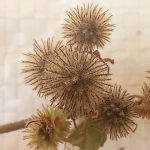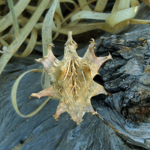 TREE LIFE 541
TREE LIFE 541
SEPTEMBER 2025
PLANNED EVENTS:- SEPTEMBER
Since inclement weather or other issues may vary our plans, WhatsApp Tony Alegria on 0772 438 697 to join our WhatsApp group for last minute updates.
Saturday 6th September 2025:- visit to the National Botanic Gardens. Meet at 8.30 in the main car park and join us for a morning looking at trees that catch our interest.
September 2025:- The Main Outing is cancelled . There won’t be a second tree outing in September as we will be in the Eastern Highlands.
You do not have to be a member to join us for most of our activities. You may decide to become a member and join us for all of activities.
REPORTS FROM PREVIOUS OUTINGS
Main outing Sunday 20th July 2025: A visit to Christon Bank
By Barbara Maasdorp

Wanting to be able to identify more miombo trees, I had long awaited the next Tree Society visit to Christon Bank, having hiked instead last year and regretted my choice.
It turned out to be a perishing cold day and no-one else but Tony Alegria showed up at St Michael’s, with Mark Hyde and Ian Riddell meeting us at the Botanic Reserve. It was a surprise to see construction of a further double-lane highway after the roundabout where a road leads off to the New Parliament. Apparently headed for Kanyemba as a more direct route through Zambia to the Congo (“in several life-times” quipped my informant!). Had my fleece jacket on the whole morning, which of course picked up silverleaf seeds and more-difficult-to-extract grass awns whenever venturing off the path.
Dutifully armed with notebook, pen, secateurs and plastic bag, I noted 35 tree species, though more were examined by the others. Distinguishing features of some of these follow, as pointed out by the experts. In this area of miombo woodland where Brachystegia boehmii (mufuti) is dominant: Christon Bank is a good place for seeing it in its splendid spring dusky pink new leaves. Many Julbernardia globiflora (munondo) and of course magnificent B. tamarindoides (mountain acacia), but very few B. spiciformis (musasa). A lone giant that we came across, looking as if it should be in forest not woodland, was Pericopsis angolensis (muwanga), with pale bark.
Our route was the path from the car park down and over the stream, then up to the top of the ridge where the main path goes to Split Rock, back along the top of the ridge then down, eventually back to the stream.
Seen from the path down to the stream:
Ochna schweinfurthiana (brick-red ochna) – some leaves serrated and bark rougher than O. puberula (granite ochna).
Zanha africana (velvet-fruited zanha) – leaves paripinnate, though some imparipinnate, hairy, large (up to 8×4 cm (Drummond, 1981)), mid-rib raised on top.
Strychnos innocua (dull-leaved strychnos, powder-bark monkey orange) – dull leaves and no spines, pale grey powdery bark.
Terminalia stenostachya (rosette-leaved terminalia) – large simple leaves, reddish in winter.
Flacourtia indica (governer’s plum) – downy leaves, (edible fruit, up to 3cm in diameter, reddish (Drummond, 1981)).
On the streambank:
Syzygium cordatum (mukute, waterberry) – cordate (heart-shaped) leaves with no petiole.
Myrica serrata (lance-leaved waxberry) – leaf margins serrated.
Up, up, up on the way to the ridge top: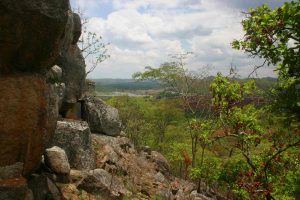
Faurea saligna (beechwood) – narrow drooping leaves with an inter-marginal vein, pinkish when young and red in winter.
Uapaca nitida (narrow-leaved mahobohobo) – leaves narrow with long petiole.
Turraea nilotica (bushveld honeysuckle tree) – large simple leaf, wrinkled.
Monotes engleri (pink-fruited monotes) – dark brown gland at the base of the leaf, (should be) very pale underneath.
Swartzia madagascariensis (snake-bean) – imparipinnate leaves with leaflets both opposite and alternate.
Albizia antunesiana (purple leaf albizia) – leaflets asymmetrical and pale underneath.
Psydrax livida (was Canthium huillense) (common canthium) – green twigs, very soft leaves, with very small stipules, branches and twigs horizontal.
Vangueria vestita (was Tapiphyllum velutinum) (velvet leaf) – very soft velvet leaf.
Vangueriopsis lanciflora (false wild medlar) – leaf a bit shiny on top, hairy underneath.
Garcinia huillensis (granite garcinia) – yellow sap.
Protea angolensis (northern protea) – broad leaf.
We tested Mark’s mycology knowledge when we inspected a black Commiphora trunk which would usually be green: “So what do you understand by ‘smut'”? Confidently answered but nothing to do with fungi! Confirmed Commiphora back at the car park as another showed green patches amongst the black.
While Tony and I enjoyed our picnic lunches, Mark and Ian dashed off to get to the former’s Phoenix Choir concert. A disappointment for Tony was seeing previously identified trees still with numbers attached and not replaced by name tags.
Reference:
Drummond, R B, 1981. Common Trees of the Central Watershed Woodlands of Zimbabwe. NRB.
Main outing Saturday 2nd August 2025 :- National Botanic Garden Outing
By Tony Alegria, photo by Jim Dryburgh
The morning was cold but the sky was blue and the sun was shining. However, when I arrived at the National Botanic Garden, it wasn’t just cold but unlike at my home, a cold wind was blowing which encouraged everyone to sit in their vehicles for as long as possible. I had organised to park our vehicles within the Garden close to where we going to botanise and that meant a drive to park near to the road that leads up to the water reservoirs. Present were only two ladies: Jenny Whitaker and Dido de Swardt. The men were Mark Hyde, Jan van Bel, Jim Dryburgh, Peter Morris and myself. Later on, I received a call from Busi Malunga wanting to know if we were at the Gardens and where we were?
The last time we tried going up the road to the reservoirs, we didn’t get very far as we became distracted by a Vachellia (Acacia) nilotica which didn’t look “right” and then moved away to compare it with other Niloticas elsewhere.
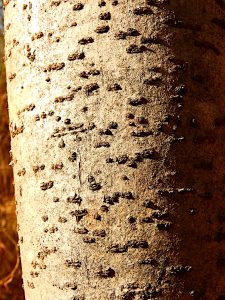
Pittosporum viridiflorum
Many of the trees in this area had already dropped their leaves or had dry leaves making anything green conspicuous. There was a lot of green belonging to many, many Pittosporum viridiflorum with their distinctive horizontal lines of lenticels. They were all over the place! Not too many big trees, but many just two or three metres high. They were growing on the side of a not too steep hill and we wondered if that made a difference at all as we hadn’t seen so many of these trees anywhere else in the gardens where the ground was flat! There were also many Pavetta gardeniifolia mostly with a few dry leaves. However, there were a few with rather large green leaves and I wondered if perhaps these were another species – perhaps Pavetta eylesii??
We came across a thinnish looking tree about six meters high with no leaves and fairly smooth bark and tried to identify it, at the very top were three roundish looking pods – jacaranda fruit which is diagnostic! We then tried identifying trees quite far away and it’s amazing how many can be identified – Cordia africana, Vachellia sieberiana, Combretum molle, Msasa, Munondo. The tree with flaky bark and curved thorns was a Senegalia (Acacia) galpinii. We then looked at a tree without leaves but had remnants of pods that looked rather narrow and distorted – failed to identify it from the road or even close by!
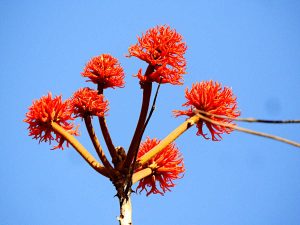
Erythrina abyssinica
Near the reservoirs was an Erythrina without leaves but had frilly pointing up flowers – the only indigenous tree matching this description is the Erythrina abyssinica. Nearby was a small Mystroxylon aethiopicum. There was also a small area here with a few small plants which we identified as: Combretum molle, Jacaranda, Munondo, Diospyros lycioides and Lantana camara. Amazing how small a tree can be and still be identifiable – definitely not the case with many trees as the leaves can be quite different.
To end the morning we went near to where the vehicles were parked to see a Brachystegia microphylla.
Some other trees seen but not mentioned above: Cussonia arborea, Erythroxylum emarginatum, Sophora velutina, Pappea capensis, Albizia amara, Vepris trichocarpa, Gardenia volkensii, Ackocanthera oppositifolia and Strophanthus amboensis which had no leaves but had a lot of fruit. Also, an unknown tree labelled “U1” which sort of resembled a Berchemia discolor and it probably is that species as trees can be quite variable.
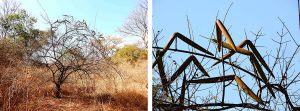
Strophanthus amboensis
Sunday 17th August 2025:- Main outing to John Lawrence’s garden
By Mark Hyde, photos by Jim Dryburgh and Mark Hyde
A small group consisting of Ian Riddell, Jan van Bel, Jim Dryburgh, Tony Alegria and I met at John Lawrence’s house on a sunny August morning. The weather had warmed up slightly in the previous few days, and initial chilliness soon wore off.
We last visited this location on the 23rd of August 2014, i.e. 11 years ago. This was not written up in Tree Life and I have very few records from that date. However, a long list had been compiled at some stage in the past and John had copies of the list ready to hand out.
John informed us that the plot is 4 acres in extent. He has been living there since 1967, i.e. 58 years. The original plot had very few trees but thanks to planting of numerous indigenous and exotic trees, this is now most definitely not the case and much of the area is heavily wooded or even in some parts thickly forested with a closed canopy and dense shade. This plant density made for an interesting walk and I recorded 137 species of plant (this includes all life forms, not just trees) and there were others which could not be identified.
In the carpark near the main house was a Queen palm (Syagrus romanzoffiana) bearing a small epiphytic Ficus lutea, the Giant-leaved fig. The latter is commonly planted around Harare for its attractive appearance and the shade produced by its evergreen leaves. It is very widespread in sub-Saharan Africa but in Zimbabwe its native range is only our Eastern Highlands. The tree does very well in cultivation and probably through birds, ‘escapes’ as an epiphyte onto other trees; this is not a very common occurrence; I only have three records, namely in Newlands, along the Chase and in the Harare Gardens. The ‘parent’ of this one was a medium-sized tree fairly close by in the garden, over towards the main Borrowdale Road.
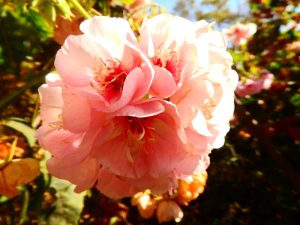
Dombeya burgessiae
So early in the season, there were not a lot of plants in flower, but there was a spectacular Dombeya burgessiae, the Pink dombeya, with its clusters of large flowers. This is a good native species usually of higher rainfall areas in Zimbabwe. This includes the Harare area and it occurs at Cleveland Dam.
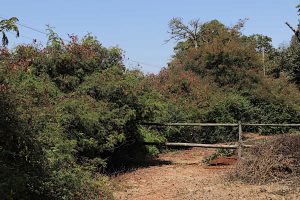
Pterolobium stellatum
Over by the fence alongside Borrowdale Road are some fine clumps of Pterolobium stellatum, the Redwing. This is a somewhat acacia-like species with 2-pinnate leaves, small leaflets, a scrambling habit and very prickly stems and leaves. The pods are shaped like those of the violet tree with a seed pod and a lateral wing and are often bright red.
This must be one of the most effective barrier plants. Oddly perhaps, it is not often used as such. I only know of some small specimens inside the fence at St Michael’s Presentation Primary School, in the Botanic Garden and another suburban garden. In Harare, the Mauritius thorn (Biancaea decapetala) is much more often used and in parts of Old Alexandra Park there are some massive specimens of Senegalia (Acacia) schweinfurthii, the River climbing acacia.
At the back of the house near the donkey paddock (both donkeys were curious about us and came to visit us. Although a little nervous at first, they became very friendly), we revisited the splendid Ficus sansibarica which bears numerous fruits on its trunk.
Nearby were some interesting non-indigenous trees, Congea tomentosa, the Pink Petrea with its pink bracts and Vernicia fordii, the Tung-oil tree. In addition, there was Psidium cattleianum, the Chinese or Cherry guava. The latter is occasionally planted around Harare and although it is invasive in other parts of the world (and also in other parts of Zimbabwe such as the Eastern Highlands) it does not seem to have become a weed around Harare. Perhaps it is only a matter of time? The fruit is delicious and surely birds will enjoy it and spread it?
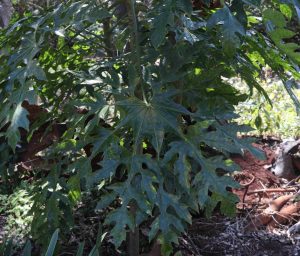
Trevesia palmata
There were also two varieties of Ficus benjamina, Weeping fig, both the typical var, benjamina including one with variegated leaves, but also the much less common var. nuda. This has much larger orange-yellow fruits and noticeably larger leaves. Although var. nuda is officially not recognised (for example on Plants of the World Online), it is a very distinct taxon.
I must add I have no idea why it is named ‘nuda’ meaning naked.
Finally, there was a Trevesia palmata, a snowflake tree in the back garden. Not commonly cultivated in the city.
Thanks go to John for opening up his interesting garden to us and for the tea provided at the end of the meeting.
FROM THE WALRUS TO THE CARPENTER
TREE LABELLING 2: AT EWANRIGG
By Tony Alegria
The only reason we are allowed to label trees is to come up with a unique list that only pertains to that site so that Tree Lists can be sold at the entrance gate. Having the name on the tree will not result in tree list sales so numbers are used instead.
We use numbers on the trees that can be looked up on a tree list in the form of a pamphlet. Unfortunately, with experts doing DNA research on trees, there are many botanical name changes. When there is a name change, we amend the name on the tree lists – a nice and easy way to keep up to date. Of course, with tree name changes, this creates confusion with tree enthusiasts.
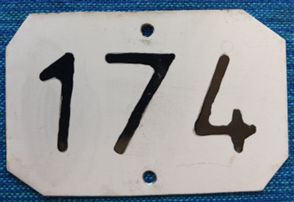 After the issues resulting from painting numbers on trees at Mukuvisi, a better system was needed. So, the a new system was devised having white labels with black numbers painted on them. These labels can be seen from quite a distance but one needs to get closer to be able to read the number. As much as I tried, I found painting numbers on these labels neatly was impossible for me, so, I ended up simply making the labels and supplying National Parks with a stencil, paint brushes and black paint and requesting them to paint numbers from 01 up to 100 to start off with.
After the issues resulting from painting numbers on trees at Mukuvisi, a better system was needed. So, the a new system was devised having white labels with black numbers painted on them. These labels can be seen from quite a distance but one needs to get closer to be able to read the number. As much as I tried, I found painting numbers on these labels neatly was impossible for me, so, I ended up simply making the labels and supplying National Parks with a stencil, paint brushes and black paint and requesting them to paint numbers from 01 up to 100 to start off with.
Before and whilst the labels were being painted, Dave Hartung and I began labelling trees. We used a number written on a small piece of paper attached to the tree with a drawing pin. It was spring so rain was not going to damage the labels in any way.
Then we were informed that the painted labels were now ready for use. We were pretty excited to be able to place the “permanent number” on the tree. The fact that we had already identified and labelled quite a few trees would make this a fairly simple task. But we were in for a big surprise, no, make that a shock! We didn’t get what I asked for! Somebody had used their initiative and come up with their own solution!
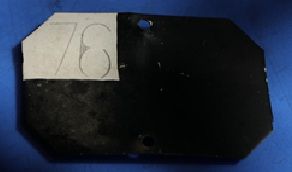
This is what they did! Definitely not what I wanted and definitely not suitable! Not wanting to lose 100 labels, we had the numbers painted on the reverse side which was not ideal as it was darker and thus not so easy to see from a distance. So, the black numbers on a grey background were used and the new numbers above 100 were what I wanted i.e. black numbers on a white background!
Then we began attaching the metal labels to the trees, but we couldn’t find all the paper labels we had attached before – they either had fallen off or had been removed! That’s when we decided we needed to have a GPS location so we could find the tree again even if the label went missing. In those days GPS devices were not readily available, often were pretty big and ate up batteries. What we did was use two 40 mm clout nails to secure the label to the tree leaving about 10mm to allow for tree growth. This was fine on a vertical trunk but not so good on an angled bole or a near horizontal branch. For the smaller trees that couldn’t take a nail, we tied the label on loosely with wire thereby allowing for growth.
Dave and I came to a point in time when we couldn’t identify any more trees so we sought help. We had help from Meg Coates Palgrave, Mark Hyde and even from a visiting pianist, Genaro, whose grandmother lives in Zimbabwe. In all, we identified 203 trees but there were still others, mostly exotics, that we didn’t know. Dave put together a pamphlet that could be sold at the entrance gate. This pamphlet was also circulated to members of the Tree Society of Zimbabwe.
Recently we decided to look at Ewanrigg again after an absence of many years with a view to replacing missing labels and to try and identify more trees as we have learnt a fair amount since the tree labelling exercise done some 8 years ago. We also wanted to label “Duplicate Trees” as before we had basically labelled one tree of each species – if you have a Gmelina arborea here and anther one some 200 metres away, they should both be labelled! Of course this results in many more labels being needed.
We did find that previously we didn’t allow enough growing space for some of the trees as the photos below taken by Mark clearly show. Tree 117 has taken up the slack of the wire completely and continued to grow! We had this issue at the National Botanical Garden and the solution was to replace the two 40mm clout nails with one 50mm nail. This gives the tree a bit more growing space and also lets the label hang better on any sloping branch or stem. Annual maintainance is required to adjust the nails to give more growing space where required! And more slack needs to be given on the wire for the thinner trees – once the slack has been taken up, a nail can be used.
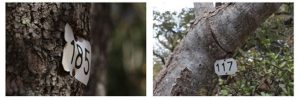
We have identified a further +/- 40 trees since starting this initiative and no doubt will find a few more. We also found that the Ewanrigg map was unsuitable for us to provide a rough guide to where a tree can be found. The map has since been modified and we have put a grid onto it which divides the whole garden areas into squares where co-ordinates can be determined. So now if you want to see a particular tree, go to the relevant square and then use the co-ordinates to find the tree. We also have a GPS location for every tree and if a GPS device is not at hand, Google Maps can be used on your phone to get to the tree.
We have now visited Ewanrigg some six times and quite a few more trips will be undertaken before we produce the new Ewanrigg pamphlet. Anyone wanting to join us in the tree labelling exercise is more than welcome to come along.
PITTOSPORUM VIRIDIFLORUM, (CHEESEWOOD),
AN EVERGREEN PLAGUE TREE UNDER CERTAIN CONDITIONS.
By Karl van Laeren, photos from Zimbabwe flora and Plantbook websites
Pittosporum: the origin is Greek. Pitta = pitch ; sporum = seed. The seed is red and covered in a dark sticky resinous coating and a light brown capsule. Viridiflorum refers to green flowers which are bisexual. Fruiting can occur as early as 4 years of age.
We bought two stands in a development that had an appealing constitution. Only indigenous trees could be planted and no tree larger than 15 cm in diameter could be cut down with the home owners committee agreeing. Alas, on my property there were only two trees that exceeded 15 cm in diameter. The property was largely open hilly grassland with coppicing Msasa trees (at 1560m altitude on dolerite) due to annual fires and wood cutting as we are on the outskirts of Harare. We looked down onto the farmland and grazing pastures that is now Borrowdale Brook golf course. I recall going down the valley to attend to an orphaned elephant once! Flappet lark could be heard calling overhead when I wild camped on the property trying to decide if it suited my needs. A single Violet tree (Securidaca longipedunculata) was present. Its roots were exposed for traditional medicine purposes as used to cause abortions but if overdosed mother and unborn child have succumbed! (reference; Micheal Garland) A few small pink jacarandas (Stereospermum kunthanum) were trying to survive the annual fires too and a Cassia abbreviata fell about 30 cm into the neighbour’s property. How annoying. Surely the boundary pegs could be moved by a small margin? The property was bought in a heartbeat, deceit and deception about boundaries had to be put on hold.
We had a treasured Uapaca tree that occurred in the building line of the font verandah so it was decided to let it be and cut a hole in the roof to allow it to survive. (till some years later it cracked the overlying floor and got unceremoniously removed. Its space in the verandah floor now filled with rocks of Zimbabwe.
Back to the topic of interest. The Pittosprum plague/ invasion. In the interest of time and fascination I decided to ask Gemini AI to write me an introduction and below is the outcome.
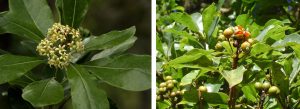
Pittosporum viridiflorum
“The Cheesewood, or Pittosporum viridiflorum, is a species native to southern and eastern Africa, often lauded for its attractive evergreen foliage, fragrant flowers, and showy seeds. While frequently celebrated as a desirable ornamental and garden tree due to its non-invasive root system and adaptability, its prolific seed production and effective dispersal by birds can lead to unintended consequences. In certain planted environments, particularly where conditions are favourable, the very attributes that make the Cheesewood appealing can contribute to an unchecked proliferation. This rapid and dense establishment of Pittosporum viridiflorum can transform it from a valued landscape element into an ecological challenge, requiring strategic interventions for its eradication and the removal of stumps to restore ecological balance and prevent further spread”
A fair appraisal but far too mild and gentle so I rephrased the request for a more aggressive an intolerable approach and this was the outcome!
“The Unchecked Menace of Cheesewood: A Warning to Horticulturists
Let’s cut to the chase: The Cheesewood, Pittosporum viridiflorum, isn’t the benign garden filler some horticulturists naively peddle. Oh, it’s pretty, alright – with its “attractive” foliage and “fragrant” blooms. And sure, those “showy” seeds are lovely, until they become the instruments of an ecological takeover. Don’t be fooled by its so-called “non-invasive” roots; that’s a red herring designed to distract you from the real threat.
The unvarnished truth is this: its prolific seed production, coupled with efficient bird dispersal, is a ticking time bomb for any planted environment. What starts as a “desirable ornamental” quickly devolves into an aggressive, unmanageable weed. We’re not talking about a polite little spread; we’re talking about a choking, dense invasion that suffocates native flora and destroys biodiversity.
To ignore this aggressive invasive nature is not just an oversight; it’s professional negligence. When Pittosporum viridiflorum finds favourable conditions, it doesn’t just “establish”; it explodes into an impenetrable thicket. And then, what’s left? A costly, labour-intensive nightmare of eradication and relentless stumping.
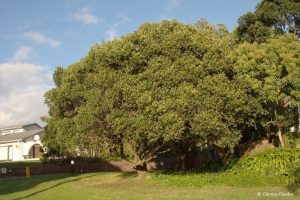
Pittosporum viridiflorum
So, consider this your unequivocal warning: underestimating the invasive potential of Cheesewood is a grave mistake.
It’s time to stop sugarcoating the reality and acknowledge that this plant, despite its superficial charm, can be a botanical bully that demands aggressive management.
Any horticulturist planning a garden needs to understand that they’re not just planting a tree; they might be unleashing a problem that will plague landscapes for years to come.”
Wonderful Gemini AI! Just what my frail and aging readership want, to get the xylem and phloem flowing against this tree! (or Chat GPT or Deep dive or whatever you choose to use!). But scary stuff too.
Now lets put some balance into the above as I know properties with one prolific tree and in spite of the profusion of seed produce no invasion at all has occurred!
Coates Palgrave’s last sentence covering this species states “This is a most worthwhile garden tree. The seeds germinate readily, and the plants strike easily from cuttings but they can become invasive”
In the book “The propagation and cultivation of indigenous trees and shrubs on the highveld” by JD Carr he makes no mention of invasiveness. “Gardening with Indigenous trees and shrubs” by David and Sally Johnson also give no warnings to its ugly side. Clearly this is not the norm as these gardeners have years of experience between them. So the take home is that the tree probably has more gentle characteristics but under some conditions and maybe certain varieties it can become an absolute menace a bit like Lantana or the exotic Bauhinia ……..?? I also see no evidence of this problem in the Zimbabwe Botanical Gardens.
We have a property of about 9 acres and needed to take action as cheesewood was taking over. Using a root chemical was not an option. So ultimately the costly decision was to use manual labour to remove the trees. Cutting the larger specimens down just created dense coppicing. So stumping was required and then back filling the holes. In one spot we pulled out 60 saplings in the space of a diner plate suggesting that the bird that was feasting on the seeds used this as its favourite overhead perch
We employed two young hard-working men to tackle the job and record what was removed on a daily basis.
Days of toil = 32 days x 2 labourers.
Trees needing stumping to remove = 556.
Young saplings that were pulled out without stumping = 405
Another neighbour removed over 500 trees for her 4 acre garden but we have another 7 neighbours with 4 acre stands each that have yet to even notice the invasion of this tree. So we will be employing extra gardeners for life clearly. Gardened or lawned areas are not invaded.
As truncheons seem to grow easily any root stock left behind may become the next generation of regrowth. The problem seems to have started when our near neighbour took his indigenous tree planting a lot more serious than anyone else. He used a JCB to create big deep holes in the largely dolomitic subsoils and fill then in with the best quality compost and topsoil. His trees, like his house, soon stood head and shoulders above everyone else’s. Amongst the Baobab, and the stunningly pretty Rothmannia was a single Pittosporum viridiflorum. The tree was planted about 25 years ago. The fruit of all evil, the alluring apple in his Garden of Eden! It became the progenitor to the plague we now face with what should have been some greenery when all other trees are leafless. A smiling tarantula, a wolf on sheep’s clothing. We never planted this species on our property.
Other invaders we now encounter in small manageable numbers are Japanese cherry, Tabebuia, Jacaranda and Cotoneaster.
Let’s see how Gemini AI,with some prompting, now describes this tree!
“Botanical blight, Ecological assassin. Horticultural horror show. Gardener’s Gangrene. Arboreal aberration. Natures nefarious nuisance. Neighbourhood nuisance. Green gargoyle. Gardeners grim reaper. Natures own weed on steroids. Treacherous tree.”
Signing off now to go for a walk to enjoy the brighter side of my garden now that the Pittosporum is temporarily in decline.
THE FALLEN GIANTS OF CHILWA
By Dr. David Gwynne-Evans
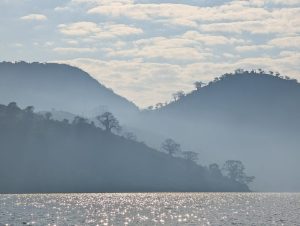
Chisi Island view
Nestled in the south-western corner of Lake Chilwa, Malawi, lies Chisi Island. Getting to the island requires a one-hour serene journey by yav. A traditional boat made from planks of locally harvested trees that are joined with stout nails and waterproofed with tar. These boats confined to Lake Chilwa, and distinct from the single-log dugout ‘bwato’ canoes, are powered by strong and deft strokes of the helmsman, who, with hand-over hand motion, thrusts a long pole off the bottom of the shallow lake. Once going, it’s quicker than walking but slower than running speed, and the mainland gently slipped past.
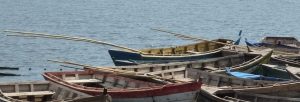
Yav boats on Lake Chilwa
As we near the island, it appears densely vegetated, the skyline that emerges from the haze being dominated by the hulking forms of twisted baobabs. Landing on the volcanic shoreline the boatsman insists on waiting till we return, but I insist harder that he leave, being uncertain where or when we would return.

Cadaba kirkii
The bushes here are mostly familiar, though for the most part the species are unknown to me. I photograph them all like a man obsessed, knowing that this may be the only concerted effort of digital records of plants for Chisi Island that I or anyone else may be likely to make.
One of my greatest delights was a rambling leafy bush covered in enchanting green and intricate flowers resembling some orchids. Mark Hyde identified it for me as Cadaba kirkii. A genus I know well from the arid areas of South Africa where Cadaba aphylla is not uncommon and this much grazed bush sports striking red flowers and stiff grey leafless stems.
After being followed (chased) round the island by a growing throng of children with Shereen being entreated by a drunk man to dance to his tinny radio; we made our escape and hid out to snack on some bananas, our only food for the day. But the kids soon located us again. We chased them off and made a dashing escape through a corn field and headed further around the island. It was here that we encountered our first fallen baobab tree. At first I assumed that the islanders had killed it as it was not only uprooted, but the base was burnt as well. What was even more disturbing is that we would frequently encounter two or three of these fallen baobabs in one short stretch of coastline. In total, dozens were encountered, with only two or three, less than 5% – still standing. What was stranger was that the ones on the mountainside were still intact. Some of the larger specimens even had orchids and Sanseveria growing from them. So what was happening?
Talking to people of the island in broken English, it became apparent that in February 2023, Cyclone Freddy made landfall on Chisi Island. At 36 days long, this was the longest-lived tropical cyclone on record. It radically changed the shoreline of the coast rendering it almost unrecognisable. Anchored aquatic plants broke free, with the floating mats of vegetation that were the habitat for innumerable fishes and other aquatic life being sent scudding into the shore. And while the large baobabs survived at first, with time their waterlogged feet rotted, causing them to intermittently collapse to the ground.
So is this an indicator of climate change or a chance happenstance?
TREE SOCIETY COMMITTEE AND CONTACTS
Chairman Tony Alegria tonyalegria47@gmail.com 0772 438 697
Vice Chairman Mark Hyde mahyde@gmail.com 0772 233 751
Honorary Treasurer Bill Clarke wrc@mweb.co.zw 0772 252 720
Secretary Teig Howson teig.howson@gmail.com 0772 256 364
Venue Organiser Ann Sinclair jimandannsincs@zol.co.zw 0772 433 125
Committee Member Jan van Bel jan_vanbel@yahoo.com 0772 440 287
Committee Member Sibusiso Malunga busimalunga@yahoo.com 0775 889 898
Tree Life Editor Linda Hyde Lmharwin@pentact.co.zw 0772 232 075
Tree Society Website https://treesociety.org.zw/
Tree Society Facebook https://www.facebook.com/groups/ztreesociety/
Flora of Zimbabwe: https://www.zimbabweflora.co.zw/
Flora of Tropical Africa: https://plants.jstor.org/collection/FLOTA

